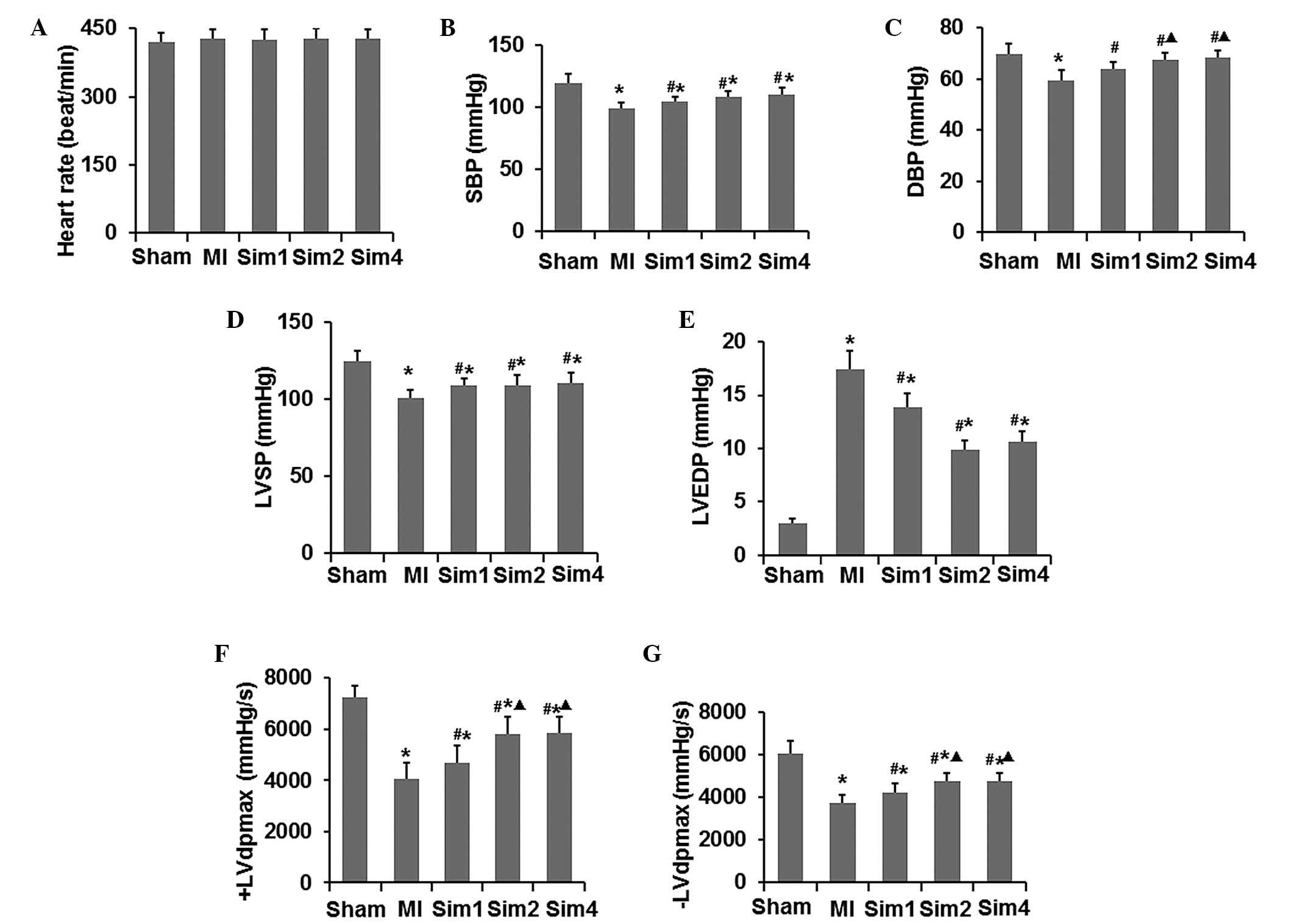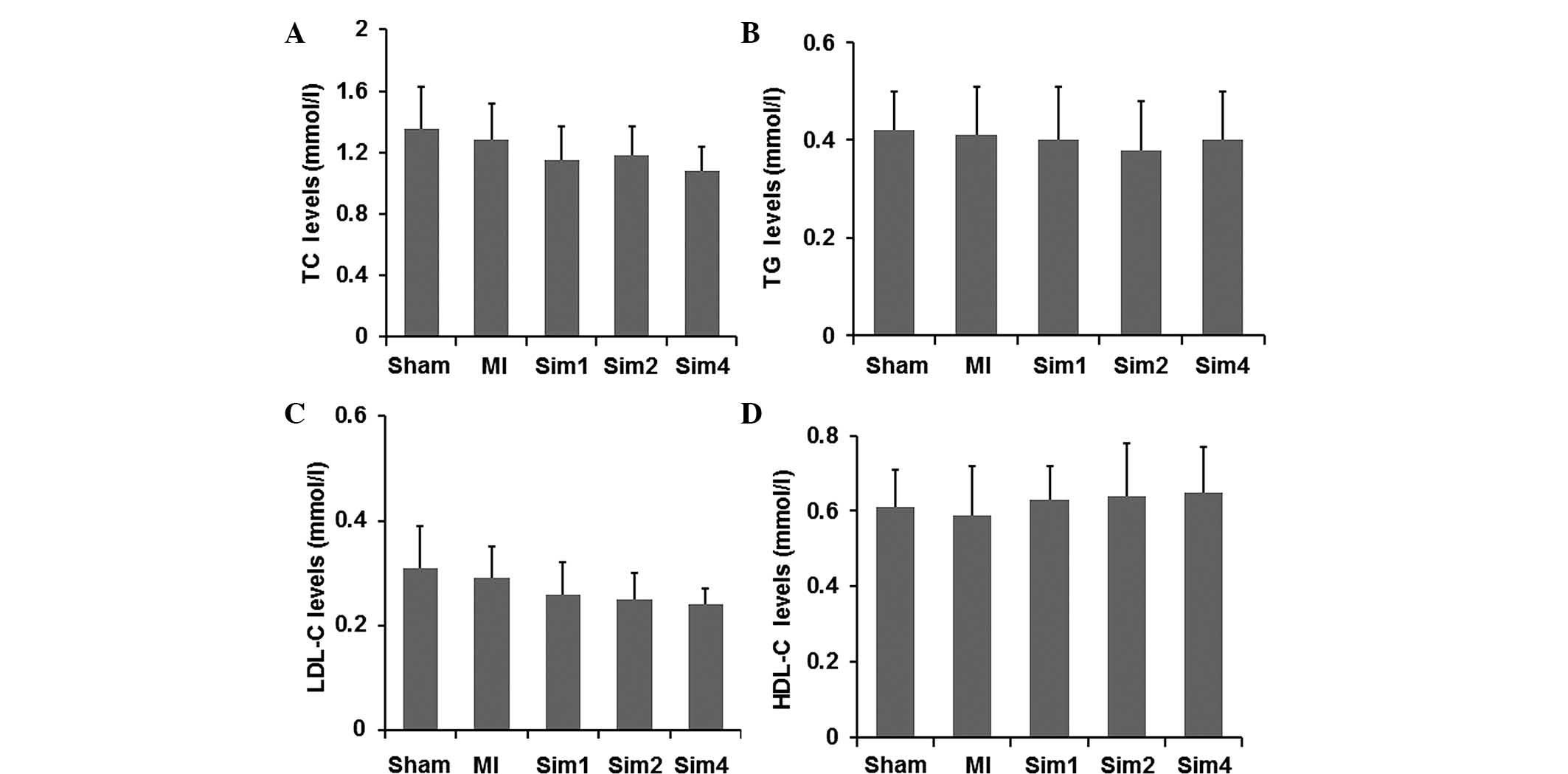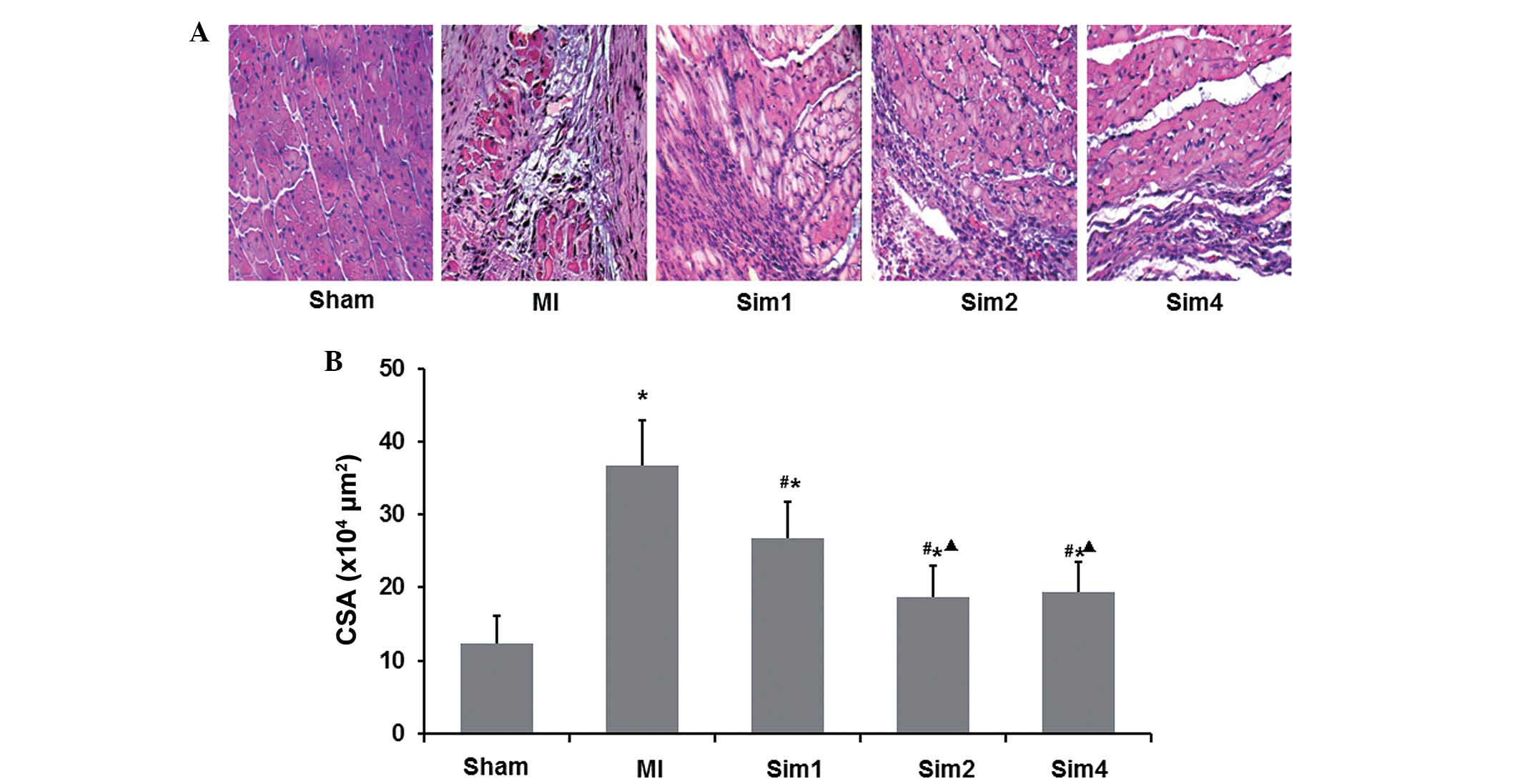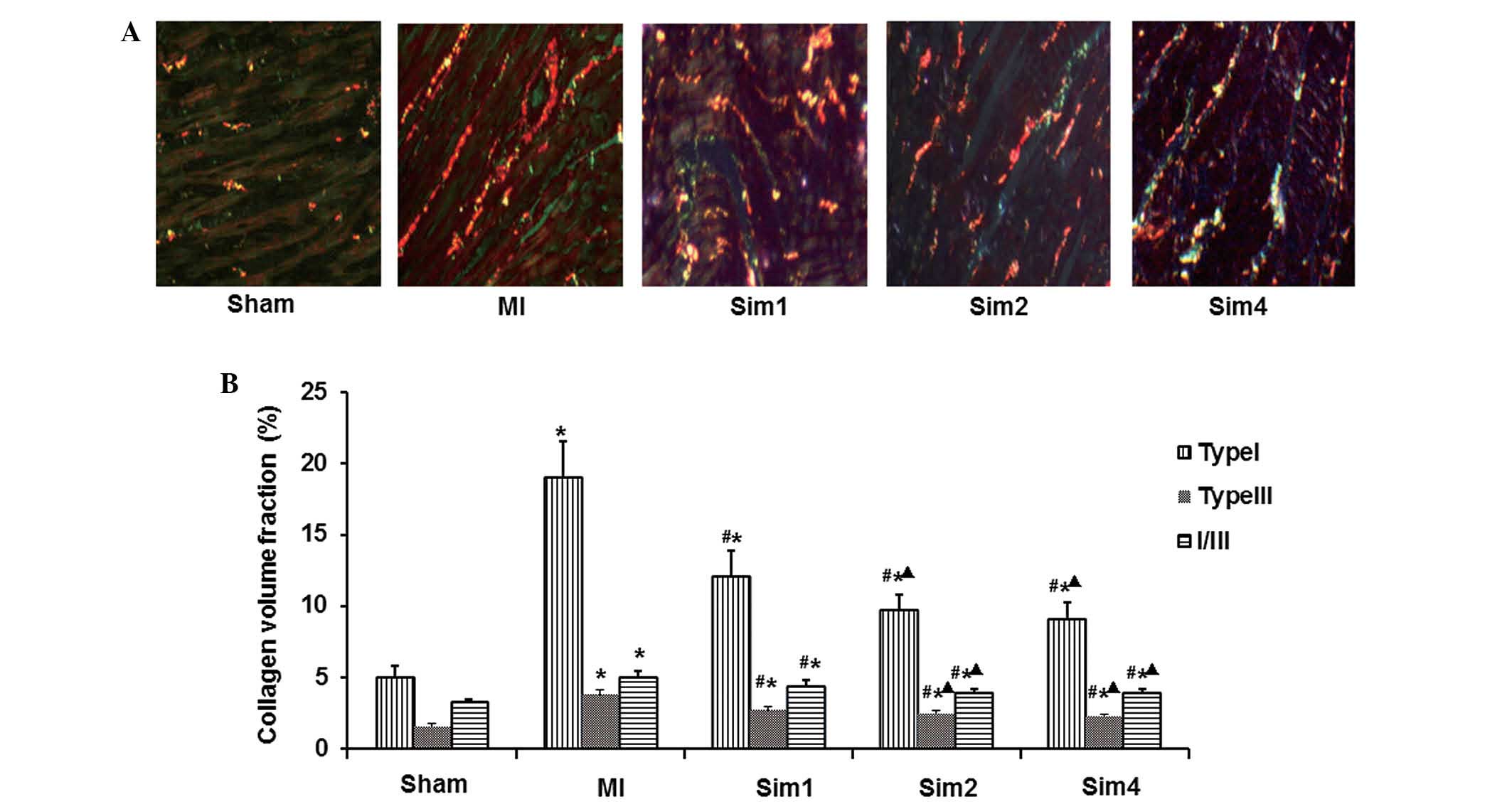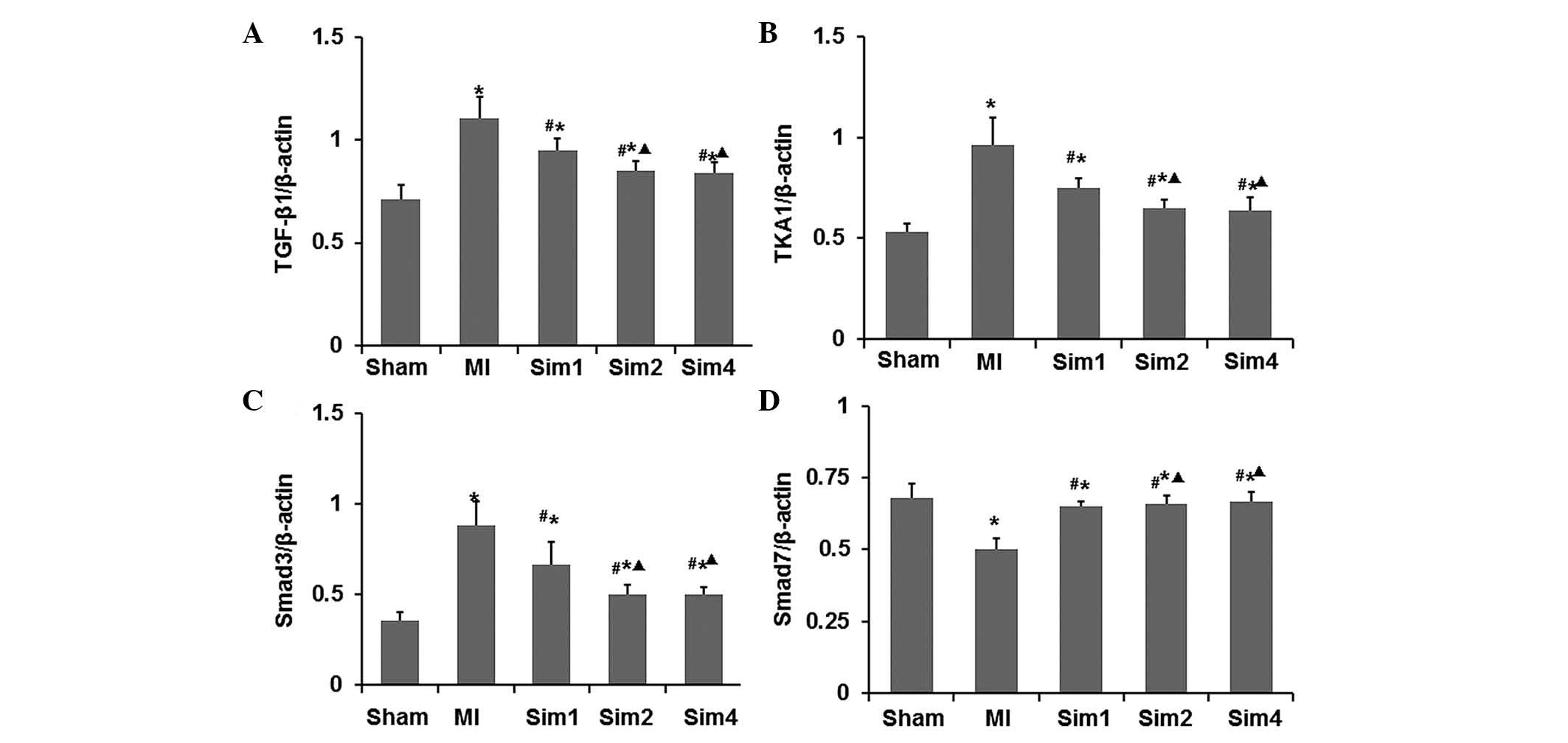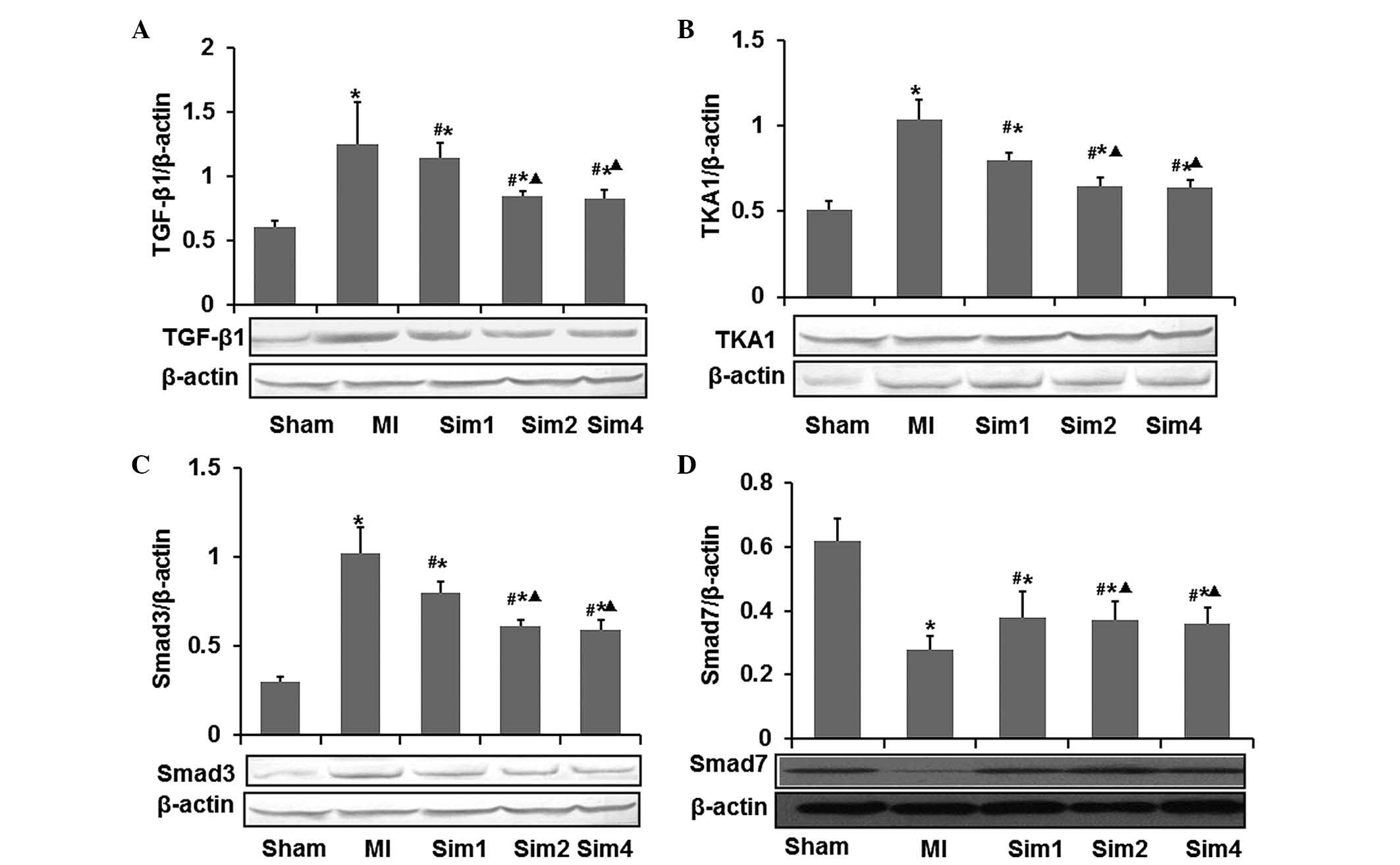|
1
|
Wassmann S, Laufs U, Bäumer AT, Müller K,
Ahlbory K, Linz W, Itter G, Rösen R, Böhm M and Nickenig G: HMG-CoA
reductase inhibitors improve endothelial dysfunction in
normocholesterolemic hypertension via reduced production of
reactive oxygen species. Hypertension. 37:1450–1457. 2001.
View Article : Google Scholar : PubMed/NCBI
|
|
2
|
Stumpf C, Petzi S, Seybold K, Wasmeier G,
Arnold M, Raaz D, Yilmaz A, Daniel WG and Garlichs CD: Atorvastatin
enhances interleukin-10 levels and improves cardiac function in
rats after acute myocardial infarction. Clin Sci (Lond). 116:45–52.
2009. View Article : Google Scholar
|
|
3
|
Porter KE and Turner NA: Statins and
myocardial remodelling: Cell and molecular pathways. Expert Rev Mol
Med. 13:e222011. View Article : Google Scholar : PubMed/NCBI
|
|
4
|
Correale M, Abruzzese S, Greco CA,
Concilio M, Biase MD and Brunetti ND: Pleiotropic effects of statin
in therapy in heart failure: A review. Curr Vasc Pharmacol.
12:873–884. 2014. View Article : Google Scholar : PubMed/NCBI
|
|
5
|
Bonifacio A, Mullen PJ, Mityko IS,
Navegantes LC, Bouitbir J and Krähenbühl S: Simvastatin induces
mitochondrial dysfunction and increased atrogin-1 expression in
H9c2 cardiomyocytes and mice in vivo. Arch Toxicol. 2014.Epub ahead
of print. PubMed/NCBI
|
|
6
|
Node K, Fujita M, Kitakaze M, Hori M and
Liao JK: Short-term statin therapy improves cardiac function and
symptoms in patients with idiopathic dilated cardiomyopathy.
Circulation. 108:839–843. 2003. View Article : Google Scholar : PubMed/NCBI
|
|
7
|
Horwich TB, MacLellan WR and Fonarow GC:
Statin therapy is associated with improved survival in ischemic and
non-ischemic heart failure. J Am Coll Cardio. 43:642–648. 2004.
View Article : Google Scholar
|
|
8
|
Li L, Chen Y, Doan J, Murray J, Molkentin
JD and Liu Q: Transforming growth factor β-activated kinase 1
signaling pathway critically regulates myocardial survival and
remodeling. Circulation. 130:2162–2172. 2014. View Article : Google Scholar : PubMed/NCBI
|
|
9
|
Wang BW, Wu GJ, Cheng WP and Shyu KG:
Mechanical stretch via transforming growth factor-β1 activates
microRNA-208a to regulate hypertrophy in cultured rat cardiac
myocytes. J Formos Med Assoc. 112:635–643. 2013. View Article : Google Scholar : PubMed/NCBI
|
|
10
|
Shi Y and Massagué J: Mechanisms of
TGF-beta signaling from cell membrane to the nucleus. Cell.
113:685–700. 2003. View Article : Google Scholar : PubMed/NCBI
|
|
11
|
Ding YF, Peng YR, Li J, Shen H, Shen MQ
and Fang TH: Gualou xiebai decoction prevents myocardial fibrosis
by blocking TGF-beta/Smad signalling. J Pharm Pharmacol.
65:1373–1381. 2013. View Article : Google Scholar : PubMed/NCBI
|
|
12
|
Zhang HY, Chu JF, Li P, Li N and Lv ZH:
Expression and diagnosis of transient receptor potential vanilloid1
in urothelium of patients with overactive bladder. J Biol Regul
Homeost Agents. 29:875–879. 2015.
|
|
13
|
Guo Y, Shi DZ, Yin HJ and Chen KJ: Effects
of tribuli saponins on ventricular remodeling after myocardial
infarction in hyper-lipidemic rats. Am J Chin Med. 35:309–316.
2007. View Article : Google Scholar
|
|
14
|
Nishikawa H, Miura S, Zhang B, Shimomura
H, Arai H, Tsuchiya Y, Matsuo K and Saku K: Statins induce the
regression of left ventricular mass in patients with angina. Circ
J. 68:12l–125. 2004. View Article : Google Scholar
|
|
15
|
Li TS, Takahashi M, Suzuki R, Kobayashi T,
Ito H, Mikamo A and Hamano K: Pravastatin improves remodeling and
cardiac function after myocardial infarction by an antiinflammatory
mechanism rather than by the induction of angiogenesis. Ann Thorac
Surg. 81:2217–2225. 2006. View Article : Google Scholar : PubMed/NCBI
|
|
16
|
Martin J, Denver R, Bailey M and Krum H:
In vitro inhibitory effects of atorvastatin on cardiac fibroblasts:
Implications for ventricular remodeling. Clin Exp Pharmacol
Physiol. 32:697–701. 2005. View Article : Google Scholar : PubMed/NCBI
|
|
17
|
Zhang DY, Qin S, Tang XJ and Yang H:
Effect of simvastatin on left ventricular remodeling and heart
function in rats with myocardial infarction. Chin Pharmacol Bull.
22:814–818. 2006.
|
|
18
|
Bauersachs J, Galuppo P, Fraccarollo D,
Christ M and Ertl G: Improvement of left ventricular remodeling and
function by hydroxymethylglutaryl coenzyme a reductase inhibition
with cerivastatin in rats with heart failure after myocardial
infarction. Circulation. 104:982–985. 2001. View Article : Google Scholar : PubMed/NCBI
|
|
19
|
Zhang J, Cheng X, Liao YH, Lu B, Yang Y,
Li B, Ge H, Wang M, Liu Y, Guo Z and Zhang L: Simvastatin regulates
myocardial cytokine expression and improves ventricular remodeling
in rats after acute myocardial infarction. Cardiovasc Drugs Ther.
19:13–21. 2005. View Article : Google Scholar : PubMed/NCBI
|
|
20
|
Flanders KC: Smad3 as a mediator of the
fibrotic response. Int J Exp Pathol. 85:47–64. 2004. View Article : Google Scholar : PubMed/NCBI
|
|
21
|
Matsumoto-Ida M, Takimoto Y, Aoyama T,
Akao M, Takeda T and Kita T: Activation of TGF-beta1-TAK1-p38 MAPK
pathway in spared cardiomyocytes is involved in left ventricular
remodeling after myocardial infarction in rats. Am J Physiol Heart
Circ Physiol. 290:H709–H715. 2006. View Article : Google Scholar
|
|
22
|
Jinnin M, Ihn H and Tamaki K:
Characterization of SIS3, a novel specific inhibitor of smad3 and
its effect on transforming growth factor-beta1-induced
extracellular matrix expression. Mol Pharmacol. 69:597–607. 2006.
View Article : Google Scholar
|
|
23
|
Johnson C, Waters DD, DeMicco DA, Breazna
A, Bittner V, Greten H, Grundy SM and LaRosa JC: Comparison of
effectiveness of atorvastatin 10 mg versus 80 mg in reducing major
cardiovascular events and repeat revascularization in patients with
previous percutaneous coronary intervention (post hoc analysis of
the Treating to New Targets [TNT] Study). Am J Cardiol.
102:1312–1317. 2008. View Article : Google Scholar : PubMed/NCBI
|
|
24
|
Reddy G and Bittner V: LDL lowering after
acute coronary syndrome: Is lower better? Curr Treat Options
Cardiovasc Med. 15:33–40. 2013. View Article : Google Scholar
|
|
25
|
Colivicchi F, Tubaro M and Santini M:
Clinical implications of switching from intensive to moderate
statin therapy after acute coronary syndromes. Int J Cardiol.
152:56–60. 2011. View Article : Google Scholar
|
|
26
|
Shepherd J, Kastelein JJ, Bittner V,
Deedwania P, Breazna A, Dobson S, Wilson DJ, Zuckerman A and Wenger
NK: TNT (Treating to New Targets) Investigators. Intensive lipid
lowering with atorvastatin in patients with coronary heart disease
and chronic kidney disease: The TNT (Treating to New Targets)
study. J Am Coll Cardiol. 51:1448–1454. 2008. View Article : Google Scholar : PubMed/NCBI
|
|
27
|
Apiyasawat S, Sritara P, Ngarmukos T,
Sriratanasathavorn C and Kasemsuwan P: Association of statin
therapy with ventricular arrhythmias among patients with acute
coronary syndrome. Heart Asia. 5:39–41. 2013. View Article : Google Scholar : PubMed/NCBI
|















